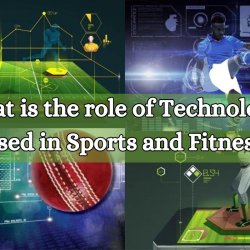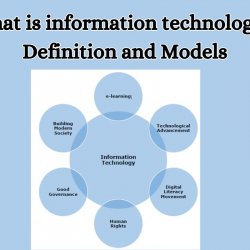What are the technologies used in space exploration?


What are the technologies used in space exploration?
Introduction
When we hear the term “space exploration“, we often think of astronauts floating in their spacesuits, planting a flag on a distant planet. Space exploration encompasses a wide range of activities, from sending spacecraft to other planets and moons, to launching satellites into orbit, to conducting experiments and research in microgravity environments.
But what exactly is space exploration? In simple terms, it is the study and discovery of outer space beyond our Earth’s atmosphere. It includes both human spaceflight and robotic missions, with the goal of expanding our knowledge of the universe and potentially finding answers to some of our biggest questions about life, origins, and the future.
Rapid advancements in technology have played a crucial role in driving space exploration forward. Without these technological developments, exploring space as we know it today would not be possible. Just think about it from the creation of satellites that help us with communication and navigation on Earth, to landing humans on the moon and sending probes to distant planets like Mars.
Technology has enabled us to overcome many challenges that come with space exploration, gravity being one of them. Rockets are one of the most important technologies used in space exploration. These powerful machines are responsible for propelling spacecraft into orbit and beyond. They also help break through Earth’s gravitational pull, which would otherwise make it impossible for us to venture far beyond our planet.
Rocket Propulsion Technologies
When we think of space exploration, we often imagine astronauts floating in zero gravity or majestic images of distant planets and galaxies. But have you ever wondered what makes space exploration possible? It’s not just about sending a spacecraft into the vastness of the universe, but also about ensuring that it can move and navigate through the vast expanse of space. This is where propulsion technologies come into play.
Propulsion technologies are essential for space exploration as they provide the necessary force to move spacecraft. Without proper propulsion, a spacecraft would be stuck in one spot, unable to venture further into space. In simple terms, propulsion technologies are like an engine for a car; they provide the power to move forward.
Out of all the different types of propulsion technologies used in space exploration, rocket engines are the most commonly used. These powerful engines use a propellant, usually a combination of fuel and oxidizer, to create thrust and propel a spacecraft forward. The first rocket engine was invented by Chinese inventors in the 13th century and has since come a long way in terms of technology and efficiency.
There are two main types of rocket engines: solid fueled and liquid fueled engines. Solid Fueled engines use a solid propellant that is pre packed into the engine before launch. Once ignited, these engines cannot be turned off until all the fuel is burned up. On the other hand, liquid fueled engines use liquid propellants that are pumped into the engine during flight. They can be controlled and turned off if needed.
Robotics and Automation
The use of robotics in space not only enables us to explore beyond our human limitations but also allows for more accurate and precise movements. As humans, we are limited by gravity and other physical constraints that affect our movements. However, robots can be designed and programmed to perform tasks with incredible precision, without being affected by these limitations.
One example of the use of robotics in space is the Mars Exploration Rovers (MER) mission by NASA. The two rovers, Spirit and Opportunity, were sent to Mars in 2004 with the goal of studying the planet’s geology and history. These rovers were equipped with advanced tools such as cameras, spectrometers, and drills that allowed them to collect valuable data about Mars’ surface.
The use of robotics also reduces the risk involved in space missions. Sending humans into outer space comes with numerous risks including exposure to radiation and limited resources for survival. By using robots instead, we can minimize these risks while still achieving our goals in space exploration.
Satellite Technology
Satellites are man made objects that orbit the Earth or other planets. They come in various sizes and shapes, from small cubesats to large communication satellites. But one thing they all have in common is their use of advanced technology.
Technology plays a crucial role in space exploration as it allows us to overcome the challenges of exploring the vastness of our universe. Without tech advancements, we wouldn’t have been able to send humans to the moon or explore Mars with rovers. And satellites are no exception; they rely entirely on advanced technology to function and carry out their various tasks.
One of the primary functions of satellites is communication. Communication satellites act as a link between Earth and space, providing us with vital data and information from distant places that would be impossible to obtain otherwise. They help us transmit television signals, phone calls, internet services, and even GPS navigation systems around the globe.
Satellite technology also plays a crucial role in meteorology and weather forecasting. Weather satellites capture images of Earth’s surface and atmosphere from orbit using various sensors and instruments. With these images, scientists can track changes in atmospheric conditions and predict weather patterns accurately.
Another essential use of satellite technology is for remote sensing collecting data about Earth’s surface from space using specialized sensors. This has proven particularly useful for monitoring natural disasters like hurricanes, fires, floods, and earthquakes. Satellites can capture images before and after a disaster strikes, helping authorities assess damage and plan disaster relief efforts accordingly.
Communication Systems
Communication has played a crucial role in our advancement as a species. It has allowed us to connect and share information with one another, breaking barriers of distance and time. But what about communication in space? How do we stay connected in the vastness of outer space, where traditional methods like phone calls and emails are not possible?
This is where communication systems come into play. These are the technologies that enable us to communicate over long distances and even beyond Earth’s atmosphere. Two essential methods used in space exploration for communication are satellite communication and radio transmission.
Satellite communication is the primary technology used for long distance communication in space exploration. It involves using artificial satellites placed in orbit around Earth to relay signals between two or more points on the surface. Satellites act as repeaters, receiving signals from one end and transmitting them to another, allowing for a continuous flow of information regardless of distance.
It’s hard to imagine space travel without satellite communication. All our missions to other planets, probes sent out to explore deep space, even images taken by telescopes beyond our solar system – all of these rely on this technology.
Satellite communication has also revolutionized how we communicate on Earth. It enables us to have global internet connectivity, telecommunication networks, television broadcasting, and navigation systems like GPS. Without it, many modern day conveniences that we take for granted would not be possible.
Guidance, Navigation, and Control Systems
Guidance, navigation, and control systems are critical technologies that play a crucial role in space exploration. These systems are responsible for ensuring that spacecraft can reach their intended destinations safely and accurately. Without them, space exploration as we know it would not be possible.
The guidance aspect of these systems involves determining the direction and trajectory of a spacecraft. This is done using advanced sensors and mathematical algorithms to calculate the spacecraft’s position and velocity relative to its target destination. It also takes into account factors like gravitational pull, atmospheric conditions, and other obstacles that may affect the trajectory of the spacecraft.
Navigation, on the other hand, deals with determining the precise location of a spacecraft at any given time. This is done using various methods such as global positioning systems (GPS), star trackers, and laser ranging devices. These technologies allow for accurate tracking of a spacecraft’s position in relation to its target destination.
Finally, control systems are responsible for maneuvering the spacecraft based on the guidance and navigation information received. These systems consist of thrusters, reaction wheels, gyroscopes, and other propulsion technologies that allow for precise control of a spacecraft’s movement in space.
The combination of these three elements guidance, navigation, and control enables spacecraft to travel thousands or even millions of kilometers through space with incredible precision. This technology has enabled us to explore our solar system and beyond, providing us with valuable insights into our universe.
Life Support Technologies
Life support technologies are at the forefront of space exploration, allowing humans to survive in isolated and extreme environments such as outer space. These technologies are essential for sustaining human life and ensuring the success of any mission.
So, what exactly are these life support technologies and how do they work? Let’s delve into this fascinating subject and uncover the key concepts behind it.
Firstly, it’s important to understand that there are various types of life support technologies used in different scenarios. For instance, in prolonged space missions, closed loop recycling systems are essential for providing astronauts with food, water, air, and other necessary resources. This technology recycles waste products and converts them into usable resources through a series of processes.
Another key aspect of life support technology is the regulation of temperature and pressure. In space, temperatures can drop down to 270 degrees Celsius in the shade or rise up to 120 degrees Celsius when exposed to direct sunlight. Similarly, without atmospheric pressure to protect us from cosmic radiation, exposure to even a few minutes of direct sunlight can prove fatal. This is where advanced heating and cooling systems come into play, maintaining a controlled environment within spacecrafts or habitats.
Planetary Exploration Technologies
Modern spacecraft are equipped with advanced sensors that allow us to observe and measure various aspects of other planets. For example, NASA’s Curiosity rover on Mars has instruments such as cameras, spectrometers, and laser systems that help in analyzing the Martian surface. This data helps scientists understand the geological composition and history of Mars.
Another crucial technology is remote sensing, which involves using satellites or probes to collect data about other planets from a distance. These satellites can capture high resolution images, temperature readings, and even detect chemical elements on other planets. This technology has helped us understand more about the conditions on other planets and identify potential landing sites for future missions.
Furthermore, communication is vital in space exploration, and technology plays a crucial role in ensuring seamless communication between Earth and spacecraft in distant parts of our solar system. The Deep Space Network (DSN), composed of large antennas strategically placed around the world, allows us to receive signals from spacecraft millions of miles away. This network enables us to communicate with rovers like Curiosity on Mars or Cassini around Saturn.






Ingen kommentarer endnu